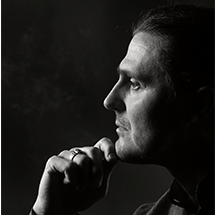The material may not match the mastery invested in it. Nowadays, it is popular to exhibit installations made of short-lived materials such as ice, sand and the like. They are beautiful but rather ephemeral, which is why the master’s effort will dissolve along with his works, leaving behind no trace, let alone legacy. Or, conversely, noble materials are often used to produce low-quality products. For instance, if a primitive pattern is stamped on a gold plate, an ugly but durable object will be obtained that will have a disharmonious effect on people throughout its entire lifespan.
The skill invested in a product may not match the personality of the one using it. Corruptionists and deceivers may wear costumes made of expensive materials, tailored by a true master and decorated with his initials, whereas a true scientist who has made a significant discovery that will help millions may wear a cheap suit made of synthetic fabric. The dignity of a person is determined by his deeds, while the dignity of a product is determined by the skill of its producer. It ideal when they correspond to each other, strengthening the Real. By contrast, the discrepancy between the mastery invested in the product and the one for whom it was made may not allow the product to gain inner strength and become filled with spirit — even in the case of an expensive product, let alone a cheap one.
The personality of the one using a product and and the meaning denoted by it may also be out of sync. For example, a lay person may use elements of a military uniform in his clothes, which implies that he is allegedly in service, whereas in reality, he does not possess any qualities associated with the service. Then clothing becomes a false product or a product for deception, which does not add any “realness” to it either. If the head of the company, along with all the employees, wears ordinary clothes that do not represent his status in any way, such clothes not only fail to help him fulfill his function, but also interfere with it and cannot be real either.
The last two signs of the Real show the relationship between the product and the one using it, and for some reason, this relationship greatly affects the degree of "realness". It may seem like no big deal when a dishonest person wears clothes that were designed and beautifully sewn for him, out of expensive fabric. After all, this should not make the clothing itself less real of a product, or should it? The fact of the matter is that higher and subtler levels of life, where the last two signs reside, become more subjective — and the subject’s importance increases here significantly. The identity or dignity of the clothes owner seriously affects other people’s attitude to both the product itself and its manufacturer. If the unworthy choose to wear suits from a certain master, they dishonor him. A decent person, honestly performing his duty, will not associate himself with the dishonourable and thieving and will be suspicious of any master who makes products for them. To such a person, the very name of the master will mean something low, indicating that he belongs to crooks.
FINDING THE REAL
The signs of the Real listed above show us the following:
- If a product is simply useful for human life, it is characterised by the first degree of the Real, which is checked against how natural it is — it is made of the same elements as the human body.
- If a product is useful for people, and the master’s skill has been invested in it, with maximum use of manual labor, it is characterised by the second degree of the Real and it even encourages its consumer to be a master in his field.
- If a product is not only useful, having skill invested in it, but it is also custom-made for a person of a certain level of dignity, the product is characterised by the third degree of the Real — it confirms its user’s dignity.
- If a product is not only useful, created masterfully and for a worthy person, but also denotes a meaning related to its owner or the higher principals, then this product is characterised by the fourth degree of the Real — it encourages its user to be sensible.
One way or another, it is difficult to find a better foundation for products supporting man than nature itself. Being surrounded by an empty environment consisting of empty products means we have lost a reliable foundation and have fallen down the spheres below nature — where there is no life. Returning to nature and then strengthening the presence of the Real in our surroundings can only be achieved by distinguishing the Real from the empty, and the degree of the Real itself according to its four.
Image by Aixklusiv from Pixabay.com
